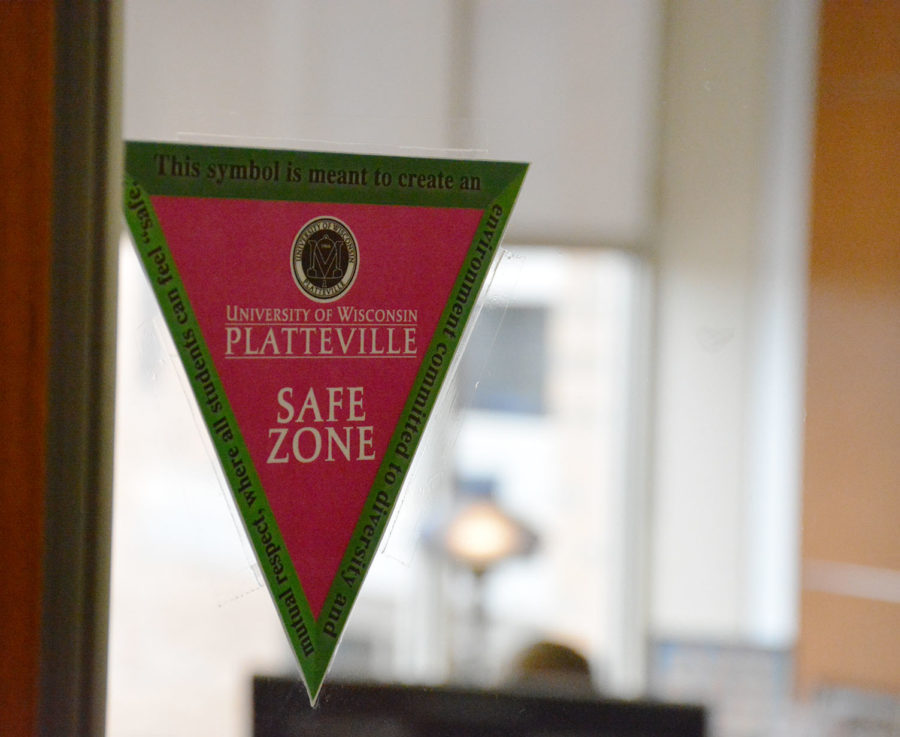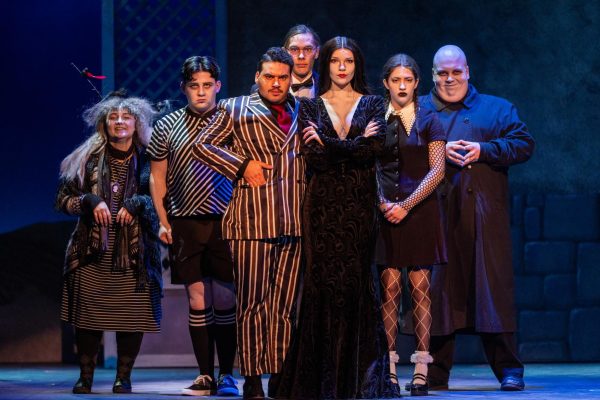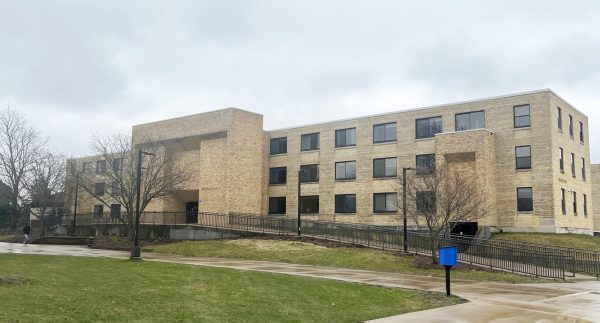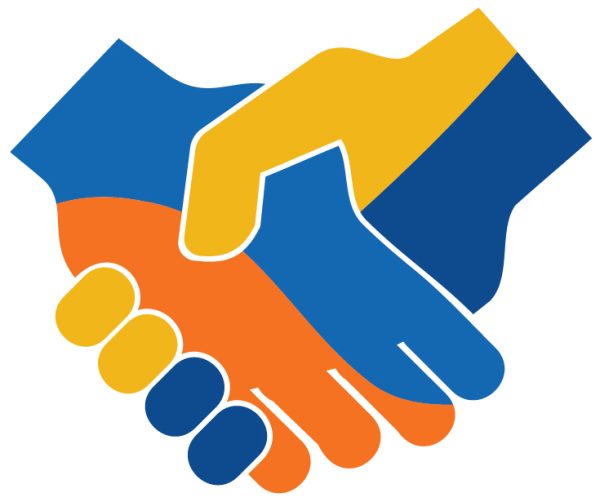‘Safe Zone’ reminder after 10 years of use
Safe zone triangles can be found across the UW-Platteville’s campus, including the Markee Pioneer Student Center.
If you walk around the University of Wisconsin-Platteville’s campus, triangle signs that read “safe zone” are scattered throughout residence halls and academic buildings. For some, they may not know where this sign comes from or what it represents. However, these triangles are important to campus by showing where students can feel that they are in a safe environment.
The reasoning behind bringing them to campus stems from head of counseling services Deirdre Dalsing seeing a need for education about supporting lesbian, gay, bisexual, transgender and questioning (LGBTQ) people on campus.
“Even years later it’s still not a given that everyone you speak to on campus will respect your identity, know to how to support LGBTQ people, or be willing to learn about LGBTQ issues,” university fellow Clare Forstie said. Dalsing offered Safe Zone training to the campus community for about eight years before the training transitioned to the Doyle Center.
“I facilitated Safe Zone training for about two years, and now Emily is leading them and doing a great job,” Forstie said.
After the presidential debate that happened earlier this month, it was brought to attention that some students are unaware of the purpose of the safe zones.
“I think that there is a misconception of what the triangle means and a lot of that stems from receiving false information about the reasoning behind safe zones and also a lack of exposure to safe spaces. There is a lot of rhetoric that the symbol means that folks cannot bring contradictory opinions or discussions to the space. That is not the meaning at all. A safe space or safe zone simply means a space where folks’ identities are respected and valued, but civil discourse, open dialogue, and varying opinions are certainly welcomed and encouraged,” Stier said.
Forstie agreed by saying, “I’d encourage folks to actually talk with people who’ve attended a Safe Zone training. Talk with Emily or me and learn a little bit more before perpetuating Safe Zone myths. Safe Zone trainings are places where open and honest questions and dialogue are encouraged, and where participants are asked to leave worries about ‘offending’ people at the door. And I’d add that, in my experience, spaces marked as ‘Safe Zones’ are actually places where civil discourse is likely to happen on campuses, because people who’ve been to Safe Zone training have some experience pushing themselves to learn outside their comfort zone and know that they don’t have all the answers all the time.”
When it comes to the Safe Zone training process, Stier explained that they cover a lot of topics that relate to gender and sexuality. The training leaves room for participants to talk about situations that have come up in their work, home life or other social circles.
“I think a key part of Safe Zone training is exactly the thing that people opposed to them are calling for: an acknowledgement that there’s no such thing as a 100 percent safe zone, but the need to try to educate ourselves and respect each other’s experiences and identities is part of moving toward safer zones,” Forstie said. “Maybe that’s what they should be called – Safer Zones. The content knowledge folks learn in Safe Zone trainings is important, but it’s just as important to learn that the education process doesn’t end with a training, and it’s ok to keep asking questions.”
Overall, the safe zones are seen as positive and helpful for members in the whole Platteville community.
“I think that they most help in a way of creating a safe and inclusive environment for folks,” said Stier. “It’s a visual indicator of what type of space you are entering and what folks will be occupying that space. It allows folks to be their authentic selves without the threat of not being accepted or supported. In my experience, folks are excited and willing to become educated on how to become an ally and support system for folks within the LGBTQ plus community—that includes students, staff, and faculty.”














